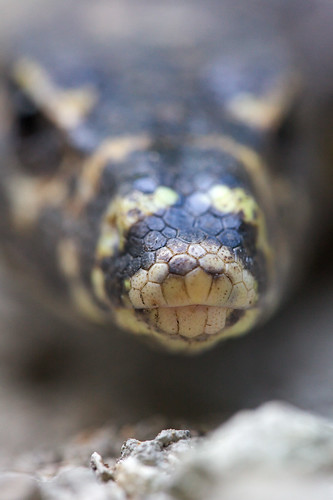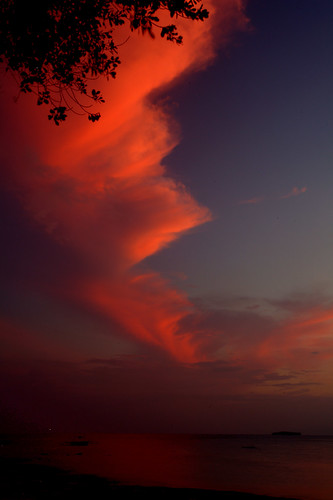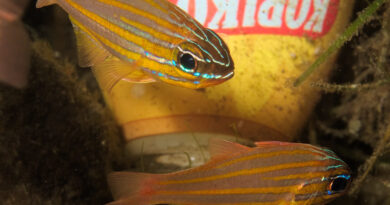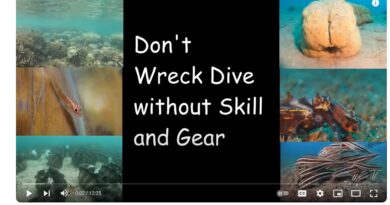The Chicken and the Anthropocene
I keep two monitor lizards in my garden. These animals are fairly common in the part of the Philippines where I live, and they sometimes attack those prized Filipino fighting chickens. Hence my neighbors occasionally catch them, and usually make a “lechon” (barbecue) from the lizard. I like lizards. I rather have them running around in the large cage which my mates built in my garden. They are interesting animals to watch. The first one I bought off a neighbor I named Lanie, after a previous aggressive female specimen I once encountered. Lanie was a huge animal, 155 cm long and probably more than 10 kgs heavy. She growled when you came close, and swung at you with her tail. When I moved her to her cage, she tried to bite me. Like her namesake, the monitor lizard ran away, and left me with less money and some exciting memories.

After about a month, someone else caught two more, medium-sized lizards. I am keeping these two now. Three weeks ago my mate and I put a chicken in the cage, as lizard food. Since they seem to attack those fighting chickens, chicken must be good lizard food, right? However, the lizards were not interested, and the chicken has been growing so quickly that it’s out of their size range by now. I feed the lizards with chicken innards, which that chicken also likes to eat! A cannibal chicken. The chicken shouldn’t even be hungry, since I feed it enough grain. When walk across the garden and come close to the cage, the lizard, a wild animal, runs to the opposite side of the cage. The domesticated chicken, which thinks I’m his friend and want to give it grain, runs towards me every time. We humans are predatory mammals who have made ourselves prey animals which run towards us! It’s like a zebra eagerly walking towards a lion. The lion would be stoked! It would have to invest less energy into hunting and could instead make more lion babies, which would overpopulate the world after a few thousand years.
And these are still rural, outdoor chickens (very tasty, I might add! They are all wiry, solid muscle.). People in the affluent countries of our planet eat few of such “countryside” chickens these days – you might be able to get one in a pricey specialty store. Most of their meat, and even a good part of the chicken eaten in Cebu is industrially raised. In factory farming the birds are reduced to one – albeit critical – part of an industrial plant which produces chicken meat from grain. That’s a long way to go from running through the shrubbery with a spear, hoping to joust it through a tasty bird which runs away.
There is another sign that it’s us, Homo sapiens (?) more and more in charge of the planet’s biosphere and atmospheric chemistry. When I stand on the Cebuano sea shore a few minutes away from the lovely little house I am renting right now, I can normally see the mountain chains of the island of Negros, 23 km to Cebu’s west across the Tanon strait quite clearly. Today I can barely make out the outline of the Negros peaks. It’s a bit hazy here. It reminds me of the time when I was living in San Diego and a big part of Southern California was burning. It’s not as bad, but there is haze … from fires more than a thousand kilometers away. A lot of people are coughing, and I just got over a cold myself. That could also have to do with the haze …The huge amount of smoke affecting a big part of the Asian tropics is another man made aspect of the world around me. The fact that we dominate more and more of the surface of the planet, from the stuff that’s in the air to the decision which animals will survive and which will go extinct has made Earth scientists call our present epoch the Anthropocene…. the Human Age.

Recently a really interesting scientific paper came out, detailing what is so fundamentally different about the Anthropocene. The authors make some really profound points. I have thought of our environment along similar lines for a while, but the study puts all of these thoughts in clear, organized words. They say very well what I have – kind of – been thinking. That’s always the most satisfying research paper to read. We are nearing the point where a big part of the primary production (photosynthesis) of the planet is harvested for the benefit of one species – us. We are changing the composition of the atmosphere now – and maybe we will have to continue tweaking it via geo-engineering, if we want to counter what we do now accidentally. If we survive as a species, we might become true guardians/engineers/captains of the planet, not merely some primate species living as part of it’s biosphere. And that biosphere … we are bringing all kinds of species to new places around the world, and are already driving many species extinct. If human use of the planet’s resources will become more extreme, these extinctions will become more extreme. Even right now the extinction burst we caused would be visible to a hypothetical paleontologist 100 million years in the distant future. If we continue to wield or scythe, the biodiversity of the planet will be reduced for tens of millions of years, or permanently if the Anthropocene is here to stay at a low level. The authors compare the anthropocene with the fundamental transition early in the history of our planet when blue-green bacteria first started making free oxygen and a good part of the anaerobic organisms on Earth perished. We are on the doorstep of a fundamental transition. A nice popular science summary of the study also appeared in The Guardian.
A book I, despite its technical content, devoured in almost one setting is this
There have been some massive extinction catastrophes taking place in the history of Planet Earth. We are witnessing the end of the beginning of the one we made.
It’s really unfortunate to contemplate these massive destructive trends the – still – incredibly rich animal and plant life on our planet is facing. The Indonesian forest fires might bring the last Orang Utangs even closer to extinction. Great apes, our close evolutionary cousins, with inquisitive minds and philosophical faces. With them, thousands of less prominent species – among them certainly insects which no human has ever seen – will perish if Asia’s tropical forests continue to be burned and transformed into crop plantations. And while we are certainly not helpless in steering many of the political decisions affecting the environment, the total process of planetary remodeling seems like an unstoppable maelstrom.
But living right now and witnessing these changes – what Williams and colleagues term the very onset of the Anthropocene – also has a certain witnessing-the-car-crash type of fascination. It’s like being an eye witness to the asteroid impact which led to the demise of the dinosaurs. A tragedy that such an amazing fauna finds its end, but a spectacular transition nevertheless. Back then I probably would have enjoyed the view, but right afterwards tried to take care of the remaining dinosaurs (yes, I know, the changes eliminating the dinosaurs took millions of years after the impact, but, obviously, it’s an allegory!).

